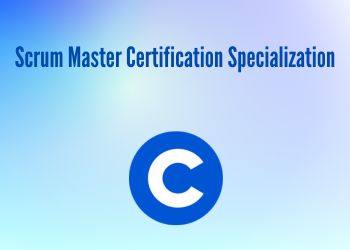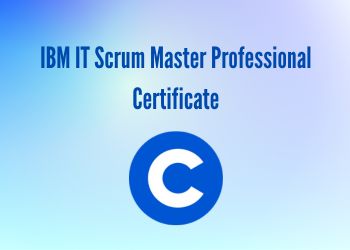Dive deep into the “PSM 1 Exam Questions and Answers” guide that is a meticulously crafted resource carefully designed to help learners elevate their Scrum Master skills. This guide also prepares you for the PSM 1 certification exam comprehensively.
Key Takeaways:
- An expertly crafted guide of PSM 1 Exam questions and answers.
- The guide covering topics like Scrum Roles, Events & Artifacts based on the Scrum Guide.
- Crafted by Certified Scrum Professionals.
What does the “PSM 1 Exam Questions and Answers” guide offer?
This guide offers a comprehensive collection of questions and answers for the PSM 1 Exam that has been prepared by experts. These questions focus on topics like Scrum Roles, Events, and Artifacts to ensure a thorough preparation for candidates preparing for the certification exam. To boost your chances of passing on your first try, explore our comprehensive PSM Certification Dumps & Practice Test.
- PSM 1 Certification Questions with Correct Answers & Solution Details
- Complete PSM 1 Practice Exams (80 Questions each)
- PSM 1 Exam 1
- PSM 1 Exam 2
- PSM 1 Exam 3
TakeThisCourse is an Online Platform where you can prepare for Scrum Master real exam by taking our Free scrum quizzes and complete PSM Certification Dumps & Practice Tests.
How we prepared these PSM 1 Exam Questions:
Our team of Certified Scrum Professionals having extensive experience in Agile Methodologies meticulously crafted the PSM 1 Exam Questions and Answers. Each question was grounded in the latest Scrum Guide principles and made sure that they were totally relevant and accurate. Our experts not only brought their practical insights into Scrum roles, events, and artifacts, but they also made sure that the answers were detailed enough to provide a deep understanding of Scrum practices.
PSM 1 Exam Questions Main Areas:
Below mentioned are three scrum areas that will be our topic of discussion today. We will talk about what these three scrum areas are and mention some questions that can help you prepare for the PSM 1 exam. So let us first know these scrum areas and then look at the PSM 1 assessment answers and questions related to these.
Scrum Roles:
In simple words, there are three essential roles for scrum success. Without these three roles, no team can perform the way they should. These three specific roles are the Product Owner, Scrum Master, and the Developers as per Scrum Guide 2020. With that, you also need to know that the scrum teams are mostly cross-functional, so that is why the developers includes a variety of people. These include testers, designers, UX specialists, and ops engineers in addition to the software developers. Check out the scrum assessment answers and questions at takethiscourse platform.

Q1. Does the composition of Developers remain constant?
- A. Always
- B. Can change during the sprints.
- C. Is constant for a sprint, can change for different sprints.
Correct Answer: C
Check out the Solution:
Developers are the people in the Scrum Team that are committed to creating any aspect of a usable Increment each Sprint. As per Scrum Guide 2020 their composition can change for different sprints to accommodate required skill sets to convert the backlog items into done increments.
Q2. What does the Product Owner do during a Sprint?
- A. Protects the Team and the process
- B. Clarifies requirements and answers questions
- C. Guides the Team in its work.
- D. Intervenes when required to make sure the pace of work is sustainable.
Correct Answer: B
Check out the Solution:
During a Sprint, the developers are focused on sprint goal and working to deliver the increment. Product Owner is available to clarify requirements or any work-related queries. The product owner has nothing to do with other items. The self-organizing and self-managing developers manages most of their work and Scrum Master facilitates the team to remove any impediments. Product Owner can only help to answer queries and clarify requirements. Check out the psm 1 study guide that can help you prepare for the PSM I training exam in the shortest time. We’ll soon upload psm 1 questions and answers pdf file that you’ll be able to download and use offline. If you’re trying to decide which certification is right for you, check out our detailed comparison of PSM 1 vs PSM 2.
Q3. Who provides estimates in Scrum?
- A. Scrum Master and the Developers
- B. The Developers only
- C. The Product Owner, The Scrum Master and the Developers
- D. It all depends.
Correct Answer: B
Checkout the Solution:
The developers provides estimates for PBI (Product Backlog Items) i.e. User stories using different estimation techniques. Planning Poker is a consensus-based technique for estimating, mostly used to estimate effort or relative size of user stories in Scrum. No one (Scrum Master or Product Owner) dictates during the estimation activity.
Q4. The CEO asks a developer to do some work outside the goals of the current Sprint in progress. What should the developer do?
- A. Add it to the next Sprint.
- B. Add it to the current Sprint while swapping out committed work of equal size.
- C. Inform the Product Owner so he can work with the CEO.
- D. Add it to the current Sprint.
Correct Answer: C
Checkout the Solution:
The developer must not take tasks from anyone outside the Scrum Team. So in case a scenario such as this comes across, the developer should inform the product owner, who could then work with the CEO to update the requirement in the Product Backlog.
Q5. Which is not a Product Owner Responsibility?
- A. Running the daily scrum meeting
- B. Gathering requirements for Product Backlog Items.
- C. Working with stakeholders to determine detail product features.
- D. Inspecting work at Sprint Review
Correct Answer: A
Checkout the Solution:
Key responsibilities of Product Owner are to gather requirements and maintain product Backlog, interacting with stakeholders and inspecting the work delivered in each Sprint Review Meeting. Product Owner may participate in daily scrum but organizing and running daily scrum is not his/her responsibility. Scrum Master is the one who actually organizes and facilitates scrum events including daily scrum.
 Scrum Master Certification Specialization
Scrum Master Certification Specialization
- Learn Quest via Coursera
- 48,802+ already enrolled!
- 1 months of effort required
- ★★★★★ (2,104 Rating)
 IBM IT Scrum Master Professional Certificate
IBM IT Scrum Master Professional Certificate
- IBM via Coursera
- 5 months of effort required
- ★★★★★ (37 Rating)
 Applied Scrum for Agile Project Management
Applied Scrum for Agile Project Management
- University of Mary Land via edX
- 4 Weeks (2–3 hours) per week
- 102,280+ already enrolled!
- ★★★★★ (81 Ratings)
Scrum Events/Ceremonies:
Scrum events which are also sometimes called ceremonies are considered to be such events that occur inside each sprint. There are four events the details of which are given below.
Sprint Planning:
Sprint planning is a part of a scrum event in which we have to define what is to be delivered in the sprint and how it is going to work. In other words, all the planning relevant to what we have to do and how we are going to do it is done in this event. The whole team is included in this event as whatever is decided is done by mutual consent.
Daily Scrum:
The daily scrum or stand-up meeting is a 15-minute time-boxed event that takes place daily. This is for the developers to synchronize activities and create a plan for the next 24 hours. In this way whatever the developers have to do the whole day is first decided and discussed in this daily stand-up.
Sprint Review:
This is also a meeting which is attended by the developers, the scrum master, stakeholders, and the product owner. In this meeting, the team has to give a demo on the product and then determine what is done up till now and what is left.
Visit here for CSM Practice Tests.
Sprint Retrospective:
As mentioned in the Scrum Guide, the sprint retrospective is an opportunity for the scrum team to evaluate themselves. They not only evaluate/inspect themselves but also create a plan for improvements where needed be. This occurs after the Sprint Review and before the next sprint planning.
Now below are some of the questions related to this knowledge area.
Q1. What is the Time-box for a Sprint Review Meeting if the sprint was 2 weeks long?
- A. 15 minutes
- B. However long it’s needed
- C. 2 hours at the end of every sprint
- D. 4 hours
Correct Answer: C
Checkout the Solution:
Sprint review is a collaboration event between scrum team and stakeholders at the end of the sprint, where Developers showcase the work they have completed (i.e. potentially shippable increment).
Scrum experts suggests that it should be two hours event for 2 weeks sprint or four hours event for 4 weeks sprint. As per Scrum Guide 2020, Sprint Review duration should be a maximum of 4 hours for one month Sprint. Followings are the suggested timeline for all scrum events:
Q2. When should the sprint retrospective be held?
- A. In the middle of each sprint.
- B. At the beginning of last sprint.
- C. At the end of each sprint.
- D. Only at the end of the last sprint.
Correct Answer: C
Checkout the Solution:
Retrospective is the final team meeting in sprint that brings an opportunity for scrum team to inspect what is done during the sprint and adapt what is really working.
Q3. What are the topics discussed in the Sprint Planning Meeting? Select all that apply
- A) Sprint Goal
- B) What can be done in the Sprint
- C) The Return on Investment for the delivered work
- D) How the chosen work will be done
Correct Answer: A, B, D
Check out the Solution:
Sprint planning meeting is the first event in a sprint, and there are three primary points in the agenda, namely what is the Sprint Goal, what are the requirements that can be “done” in the Sprint to achieve the sprint goal, and how the work on the requirements can be executed to get an increment.
Q4. Which Scrum event is an opportunity for inspection and adaption? Select all that apply.
- A) Daily Scrum
- B) Sprint Review
- C) Sprint Retrospective
- D) Sprint Planning
- E) All of the above
Correct Answer: E
Check out the Solution:
All the Scrum events are an opportunity for inspection and adaptation.
Q5. The upper time limit for the Sprint Planning is dependent on the length of the Sprint – True or False?
- A) True
- B) False
Correct Answer: B
Check out the Solution:
As per Scrum Guide 2020, the time-box of the Sprint Planning is 8 hours irrespective of the Sprint duration, although, it is usually shorter for shorter sprints.
Checkout more on Sprint planning here: https://scrumguides.org/scrum-guide.html#sprint-planning
Scrum Artifacts:
The Scrum artifacts describe three primary artifacts which are known to be the product backlog, the sprint backlog, and lastly the product increment. These artifacts can be considered to be information radiators because they serve to capture the shared understanding of the team at a particular point in time. The scrum artifacts are designed specifically to maximize the transparency of key information. It is so that everyone has the same understanding of the artifact and can then perform according to it.
The following are the questions mentioned relevant to this knowledge area which you must read.
Q1. Items in the Product Backlog tend to be:
- A. Small than the items in the Sprint Backlog.
- B. Larger than the items in the Sprint Backlog.
- C. The same size as the items in the Sprint Backlog.
- D. Usually much smaller than related Sprint Backlog items but it depends.
Correct Answer: B
Checkout the Solution:
As we know that Sprint Backlog is a subset of Product Backlog.
PBI (Product Backlog Items) are normally user stories written by Product Owner as input from stakeholders. Later during planning and brainstorming sessions, these stories get matured, fine-grained and in some cases decomposed into smaller ones before selection for Sprint Backlog. So, Items in Product Backlog are normally larger than the items in Sprint Backlog.
Q2. What constitutes the Sprint Backlog and are normally estimated in hours?
- A. Stories
- B. Use cases
- C. Features
- D. Tasks
Correct Answer: D
Checkout the Solution:
Sprint Backlog is basically a subset of Product Backlog including set of PBI (Product Backlog Items) picked for upcoming sprint. These are further divided into tasks and tasks are estimated in hours.
Q3. Sprint Backlog is ultimately owned by:
- A. The Product Owner
- B. The Scrum Master
- C. The Stakeholders
- D. The Developers
Correct Answer: D
Checkout the Solution:
It’s is tricky question. Product Owner is responsible for managing and prioritizing Product Backlog. But as far as Sprint Backlog is concerned, it’s owned by the Developers.
As per Scrum Guide 2020, Sprint Backlog is planned by and for the Developers.
Reference: https://scrumguides.org/scrum-guide.html#sprint-backlog
Q4. How does Definition of “Done” (DoD) help to the Scrum Team? Select all that apply
- A. DoD ensures artifact transparency
- B. DoD is used to assess when work is complete on the product Increment
- C. Guides the Developers in knowing how many Product Backlog items it can select during a Sprint Planning
- D. DoD helps to calculate velocity of the Team
Correct Answer: A, B, C
Checkout the Solution:
Definition of “Done” ensures artifact transparency as it defines the parameters for the tasks which the developers are going to deliver, providing insights to the Product Owner on what to expect.
DoD is also as a guideline for the developers to understand when the work is done.
DoD also helps the Developers define the scope of the tasks and the acceptance criteria for the backlog items to be considered as done, thereby helping them better estimate how much work it can deliver during the Sprint.
Q5. Defects are tracked separately and are not part of the Product Backlog – True or False?
- A. True
- B. False
Correct Answer: B
Checkout the Solution:
Defects are part of the Product backlog and are tracked with all the other items in the backlog.
PSM Practice Exam 1 PSM Practice Exam 2 PSM Practice Exam 3
So these were the three scrum knowledge areas that are very important to know and understand if you really want to become a certified Scrum master. We hope this article was of some help to our readers as the information about the knowledge areas and the questions and answers are relevant and helpful in preparing for the PSM 1 certification free skill assessment. So read this topic now and don’t forget to stay home, stay safe, and never stop learning.
More Related Articles:
- Burndown vs Burnup Charts
- Scrum Master Salary Stats
- Iterative vs Incremental Development in Agile
- Rup vs Agile
- Scrum Vs Kanban
Some Best Courses for Scrum Master Certifications:
 Scrum Master Prep + Scrum Master + Agile Scrum Training
Scrum Master Prep + Scrum Master + Agile Scrum Training
- Paul Ashun via Udemy
- 184,348+ already enrolled!
- ★★★★☆ (23,026 Ratings)
 Complete Agile Scrum Master Certification Training
Complete Agile Scrum Master Certification Training
- Omni Academy via Udemy
- 25,917+ already enrolled!
- ★★★★★ (5,020 Ratings)
 Scrum Master PSM 1 – Scrum Master Certification – Agile 2022
Scrum Master PSM 1 – Scrum Master Certification – Agile 2022
- Michael James via Udemy
- 1,341+ already enrolled!
- ★★★★★ (71 ratings)
Your Feedback:
Aamazing Content
Aamazing Content




